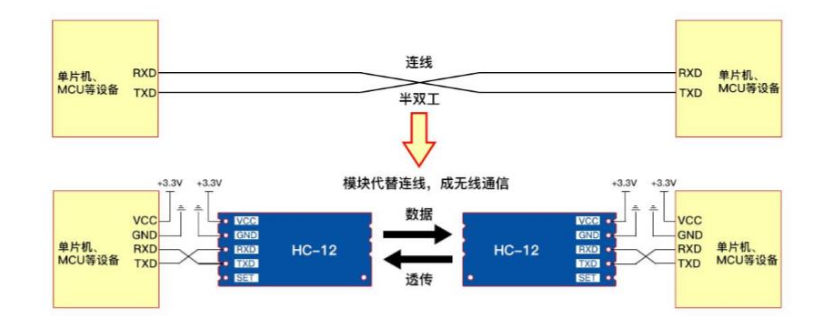As technology becomes more and more developed, the Internet of Things has quietly entered every aspect of our lives, such as wireless data transmission. Wireless data transmission modules are widely used in vehicle monitoring, remote control, telemetry, small wireless networks, and industrial data collection. Systems, wireless tags, identification, non-contact RF smart cards, wireless meter reading, access control systems, community paging, small wireless data terminals, security fire protection systems, wireless remote control systems, biological signal collection, wireless 232 data communications, hydrological and meteorological monitoring, robots Control, wireless 485/422 data communication, digital audio, digital image transmission and other fields. Next, Zongheng Intelligent Control will explain to you the ” working principle of the wireless receiving module “.
The wireless transceiver module is designed with Silicon Labs’ SI4438 high-performance wireless transceiver chip, which has low power consumption, long distance, and the smallest size in the industry. The module integrates all radio frequency related functions and equipment. Users can use this module to easily develop wireless products with stable performance and high reliability without having an in-depth understanding of radio frequency circuit design.

1. Working principle of WiFi module
The Wi-Fi module is also called the serial Wi-Fi module. It belongs to the transmission layer of the Internet of Things. Its function is to convert the serial port or TTL level into an embedded module that complies with the Wi-Fi wireless network communication standard. It has a built-in wireless network protocol IEEE802.11b.gn protocol stack and TCP/IP protocol stack. Traditional hardware devices embedded with Wi-Fi modules can directly use Wi-Fi to connect to the Internet, which is an important part of realizing wireless smart home, M2M and other Internet of Things applications.
The WiFi module performs fast networking by specifying channel numbers. In the normal wireless networking process, all current channels will be automatically scanned to find the (or Adhoc) network established by the intended AP to be connected. The serial wifi module provides parameters for setting the working channel. Under the premise that the intended network address channel is known, the working channel of the module can be directly specified, thereby achieving the purpose of accelerating the networking speed.

2. Working principle of 4G module
4G module refers to a general term for a product whose hardware is loaded into a designated frequency band, whose software supports the standardized LTE protocol, and whose software and hardware are highly integrated and modular. It has the characteristics of fast communication speed, wide network spectrum, and sensitive communication. The hardware integrates radio frequency and baseband on a small PCB board to complete wireless reception, transmission, and baseband signal processing functions. The software supports voice dialing, text message sending and receiving, dial-up networking and other functions. The 4G module transmits all terminal business data and normal operating status of the equipment to the business center in real time through high-speed networking. Through the management and monitoring platform, the operating status of the terminal equipment is monitored in real time and equipment faults can be checked in a timely manner. Efficiency has been greatly improved in many aspects such as operating costs, operation planning, and service timeliness.
The above is an introduction to the working principles of 4G modules and WiFi modules. Each wireless module has its advantages, and you still need to consider their respective adaptability when selecting and using them. In short, the wireless data transmission module has wireless transmission, long distance, easy installation, low power consumption, and no wiring required. The wireless data transmission module communication interface is small in size and easy to install. Wireless transceiver modules have been widely used in the market and are used in intelligent transportation, industrial equipment data collection; water, electricity, gas, automatic meter reading and charging systems; building automation, security, and computer room equipment wireless monitoring; medical and electronic instrumentation Automation control; bank and government queue management systems; vehicle GPS recorders; car anti-thefts; wireless electronic displays, answering machines, etc.; wireless ordering systems; smart wireless PDA terminals.
The above is the ” Working Principle of Wireless Receiving Module ” introduced by Zongheng Intelligent Control. hope it helps you! To learn more about the Internet of Things, you can check it out on this site!
Mots clés : module de transmission sans fil